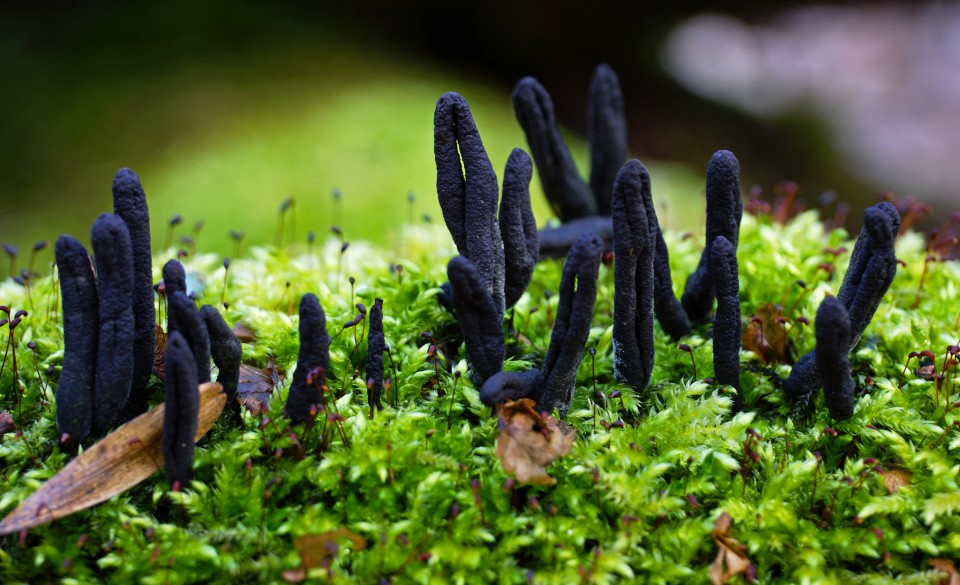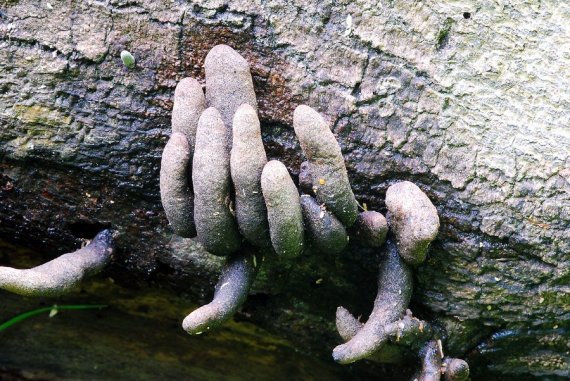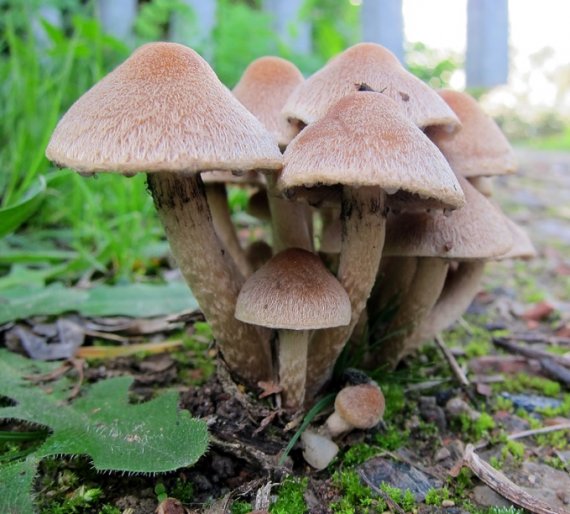Latest

30th October 2024
As Halloween approaches, our woodlands fill with strange, other worldly lifeforms. Neither plant nor animal, some appear almost supernatural. Find out more about some of the scary fungi you may encounter in the woods of the Mersey Forest…

Fungi don’t possess chlorophyll so unlike green plants they can’t produce their own food. Instead they secrete enzymes which liquify their food source and in the process cause rot and decay. In woodlands they feed mainly on leaves and wood but that is not all. And some of what is going on is really unpleasant!

It’s not easy to find but occasionally you can come across a small orange club fungus with a pitted surface up to 5cm high (above). If you were to carefully dig down under the fungus you would find it is attached to the pupa or larva of a butterfly or moth.
The insect has been attacked by the fungus which mummifies it, keeping it alive long enough to feed on its body. Once the fungus has built up sufficient energy it bursts out of the insect’s body to produce the club which will generate more spores. The Scarlet Caterpillar Fungus is like something out of science fiction except it’s for real and living somewhere near you!

Around the base of old and rotting tree stumps you may come across groups of black and contorted small stumpy fungi (above and top). These are Dead Man’s Fingers. It’s as if rotting hands are trying to escape from the soil where they have been buried.

Perhaps nearby you’ll find a collection of mournful Weeping Widows (above). These are toadstools with dark brown gills. Black watery droplets collect on the gills like tears.


Dead wood and twigs are usually good hunting grounds for fungi. Some of these are jelly like with lots of folds and contortions bursting out of the wood. A bright yellow one is the Yellow Brain Fungus and a darker black species is Black Witches Butter (both above).
Sometimes people report strange pale green-blue glowing lights in the woods. A cold, supernatural fire – thought to be ghosts or faeries, and often called ‘foxfire’. In reality it’s down to a phenomenon where some fungi glow in the dark.
The most frequent reports of glowing wood relate to honey fungus. It seems that the fungal light results when a chemical rich in phosphorus combines with oxygen in the presence of an enzyme.
The kingdom of the fungi contains all sorts of fascinating things. Take a wander through your local woodland and check them out – if you dare…